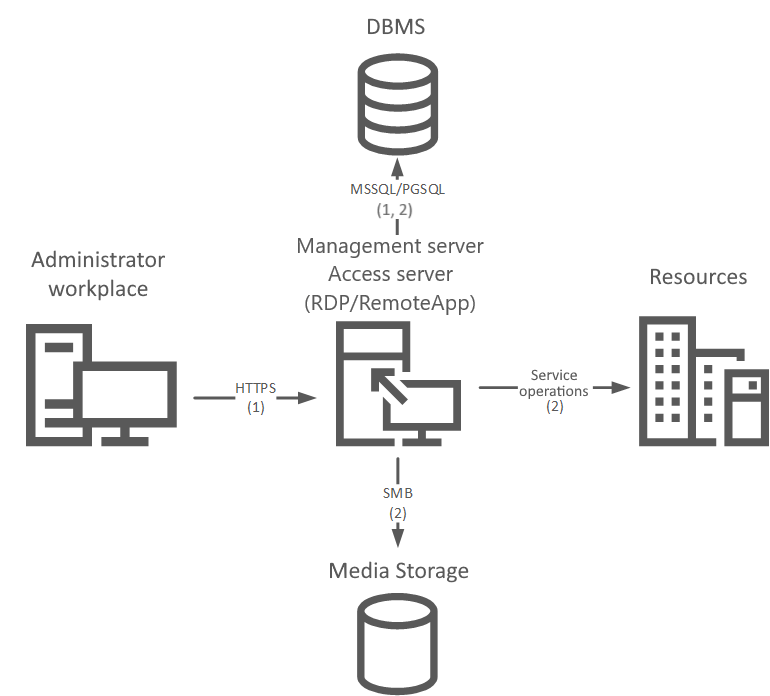Simplified on Windows
All Axidian Privilege components are installed on two servers. Recommended for review and testing.
Components
Management Server / Access Server (RDP/RemoteApp)
- Axidian Privilege Core
- Axidian Privilege IdP
- Axidian Privilege Management Console
- Axidian Privilege User Console
- Axidian Privilege Log Server
- Axidian Privilege EventLog
- Axidian Privilege Gateway
- Axidian Privilege ESSO Admin Pack
- Axidian Privilege ESSO Agent
Access Server (SSH/SCP/SFTP)
- Axidian Privilege SSH Proxy
- Axidian Privilege RDP Proxy
- Axidian Privilege PostgreSQL Proxy
Work Scenarios
User Scenario

- Connection to the user's self service via a browser or Axidian Privilege Desktop Console. Domain authentication and second factor authentication. Checking the user in the IdP database. Getting a list of resources from the Core database. Obtaining an RDP file to connect to a resource.
- Connection to Access server (RDP/RemoteApp) using an RDP file, Axidian Privilege Desktop Console or connection to Access server (RDP/SSH/SCP/SFTP) using a separate RDP file or SSH client.
- Domain authentication and second factor authentication. Checking the user of the IdP database. Checking the permission to access the Core database. Retrieving service account credentials from the DBMS to work with media storage. Retrieving privileged account credentials from the DBMS for connecting to a resource.
- Connecting to a resource.
- Saving videos and screenshots in the media storage. Saving a text log to the Core database.
Administrator Scenario

- Connection to the administrator's self service. Domain authentication and second factor authentication. Checking the user in the IdP database.
- Getting, adding and editing system objects. Performing service operations.